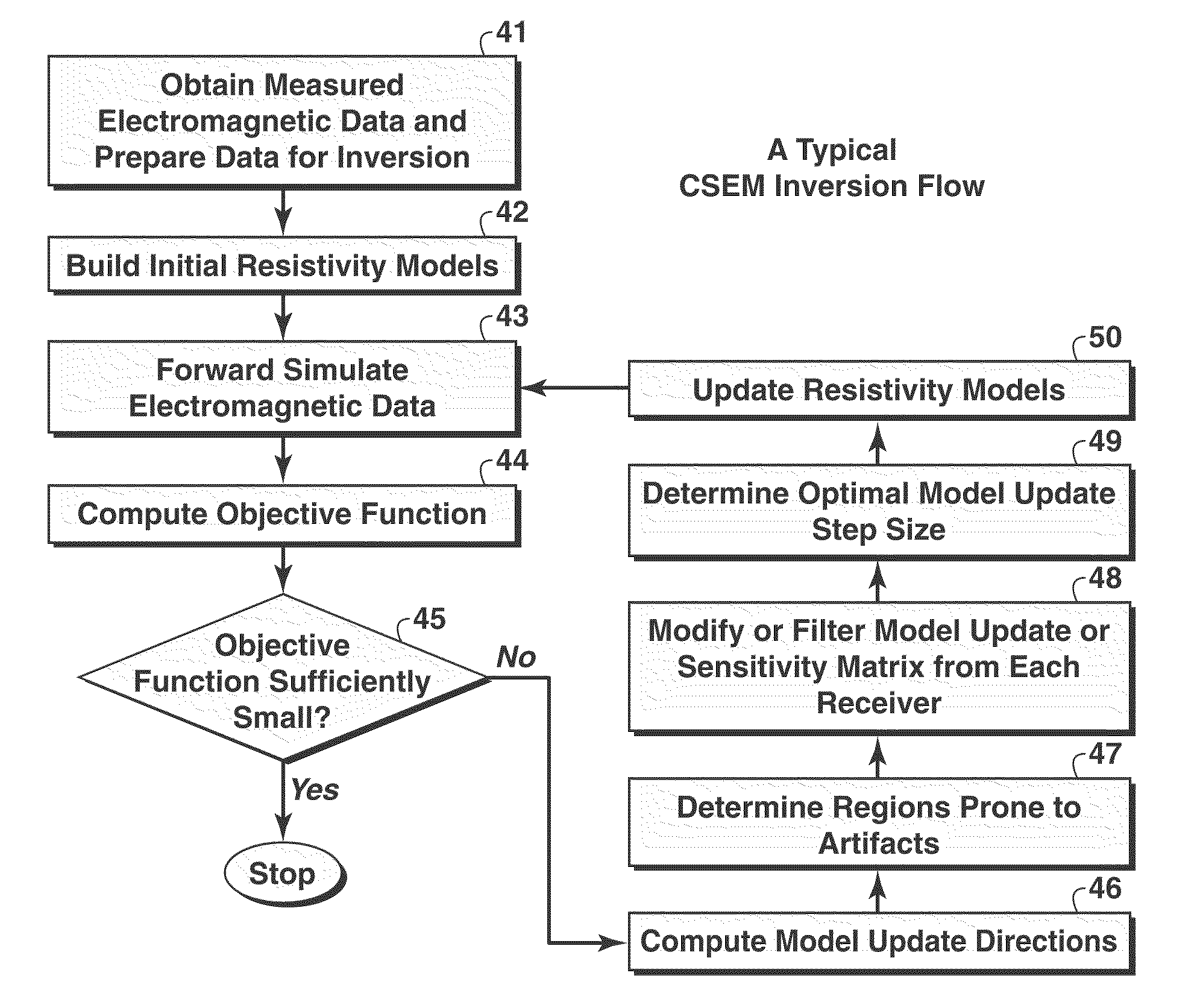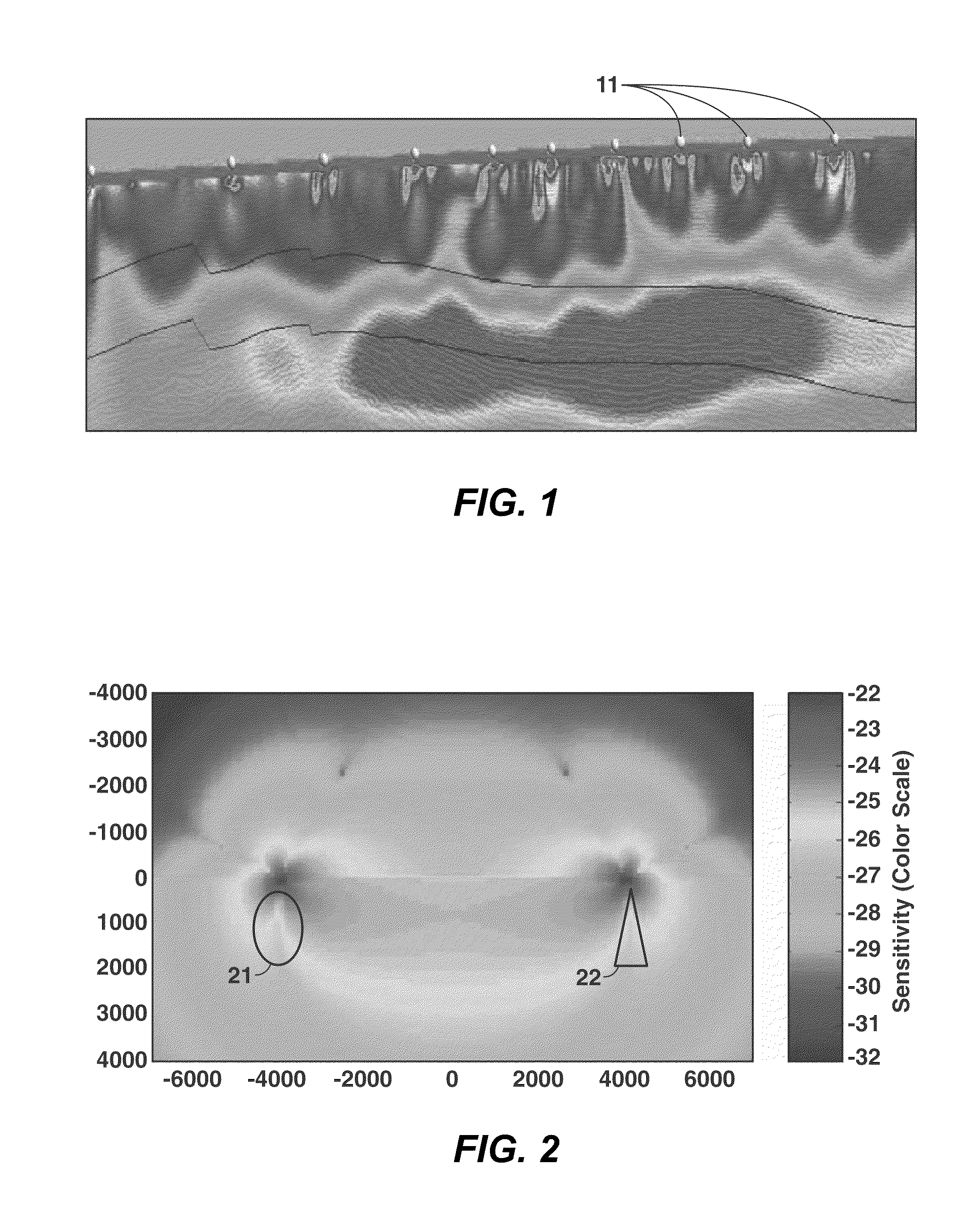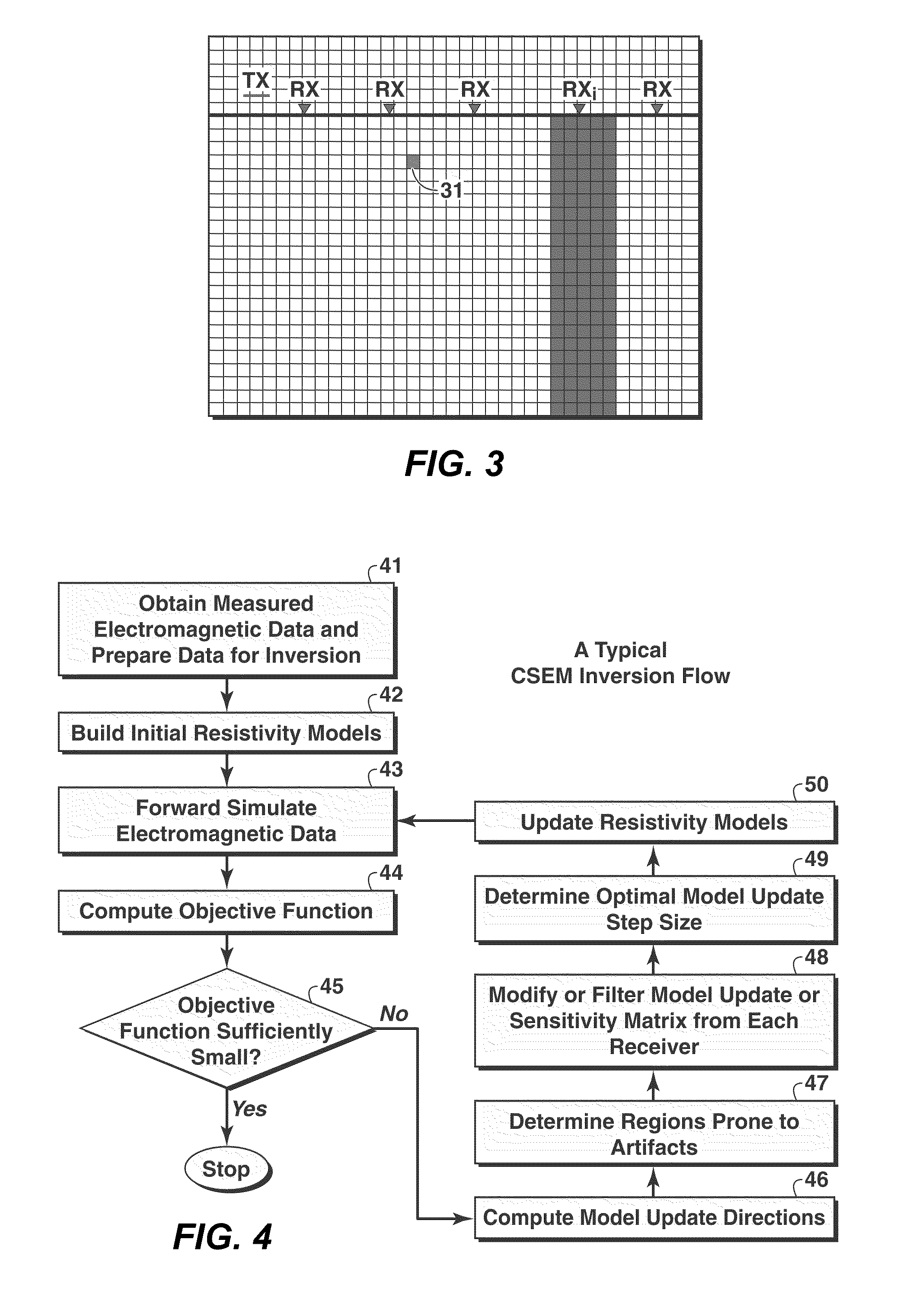Inversion of CSEM Data With Measurement System Signature Suppression
a technology of inversion process and measurement system, applied in the field of geophysical prospecting, can solve the problems of not being able to achieve all cells near the receiver, affecting the model derived from this inversion process, etc., and achieve the effect of reducing sensitivity effects
- Summary
- Abstract
- Description
- Claims
- Application Information
AI Technical Summary
Benefits of technology
Problems solved by technology
Method used
Image
Examples
examples
[0054]A synthetic CSEM data set is used to illustrate the effectiveness of the present invention. FIG. 5 shows a vertical slice of resistivity from an inversion carried out without a spatial filter. The large resistivity updates are localized below each receiver (inverted triangles); this effect is related to the weak sensitivity in those regions. FIG. 6 shows a vertical slice of resistivity from an inversion using a spatial filter to reduce the model update within a predefined region around each of the receivers. In this example, the filter applied to the resistivity update from a certain receiver is f(r)=(1−cos(π r / r0) for r0, and f(r)=1 for r>r0, where r is the radial distance from the receiver. The value of r0 used in this example is 500 m. The filter was applied to the model update from each receiver before forming the total model update for the next iteration.
[0055]The value of r0 can be chosen to depend upon frequency and upon the background resistivity (near the receiver loc...
PUM
 Login to View More
Login to View More Abstract
Description
Claims
Application Information
 Login to View More
Login to View More - R&D
- Intellectual Property
- Life Sciences
- Materials
- Tech Scout
- Unparalleled Data Quality
- Higher Quality Content
- 60% Fewer Hallucinations
Browse by: Latest US Patents, China's latest patents, Technical Efficacy Thesaurus, Application Domain, Technology Topic, Popular Technical Reports.
© 2025 PatSnap. All rights reserved.Legal|Privacy policy|Modern Slavery Act Transparency Statement|Sitemap|About US| Contact US: help@patsnap.com



